Table of contents
Soy milk is poisonous when raw. When heated and in good ( organic) quality, soy milk can be healthy when consumed in moderate amounts.
Use in the kitchen
What is soy milk? Soy milk is a plant-based drink made from soybeans. Due to its protein content, it is highly valued as a lactose-free substitute for cow's milk, especially in vegetarian and vegan dishes. Similar to rice milk, oat milk, hazelnut milk or almond milk.
The protein content of soy milk is high and the amino acid composition is almost complete. 4,5 The soybeans it is made from provide valuable protein, but also toxins – soybeans are poisonous when raw. Similar to kidney beans, which are even more poisonous when raw, the lectins they contain make raw soybeans indigestible. 26 Cooking makes it possible to reduce or inactivate the toxic or indigestible substances. 13,14,17 Other techniques such as fermentation or germination may also make soy milk more digestible. 5,17 However, the data on this is not clear. 31 Fermentation also seems to improve the taste. 30 In any case, soy milk must at least be heated to make it possible to consume it at all. The vegan, plant-based "milk" is therefore not a raw food product. After inactivation of the indigestible substances, soy milk is a good starting product for the production of fermented foods, such as soy yoghurt, or for the production of tofu, vegan ice cream or shakes.
The taste of soy milk can vary greatly from product to product. In general, the "milk" tastes creamy, nutty; sometimes a little bitter. The production process has improved over the years, which has greatly benefited the taste and digestibility. Depending on the product, soy milk can be used as a relatively tasteless ingredient in both sweet and salty recipes. It goes well in vanilla pudding, semolina porridge, pancakes, mashed potatoes or as a base for sauces such as vegan béchamel, cream or vegan mayonnaise.
Making your own soy milk
What is soy milk made of and how is soy milk made? Basically, soy milk only contains soybeans and water. However, there are recipes with various ingredients and preparation methods. To avoid unhealthy additives, you can also make soy milk at home:
Ingredients (for approx. 1 L milk): 1 L Drinking water, 100 g dried soybeans (organic). You can choose the ratio of water to beans yourself. We recommend at least 100 g dried soybeans per liter of water.
Preparation: Soak the dried soybeans overnight, this reduces the cooking time and soaking reduces the antinutrients.
Preparation: Drain and rinse the soaking water from the dried soybeans, puree with 1 litre of fresh water to obtain the finest possible mass. Separate all solid components using a suitable filter (linen/strain cloth, nut milk bag, etc.). The pomace, which is also known as okara, has many uses in the kitchen, e.g. as an ingredient in baked goods or as an ingredient in soups and stews. Pour the raw soy milk into a pan and heat slowly at first, then simmer for 20 minutes, stirring regularly. This removes toxins that inhibit digestion (e.g. trypsin inhibitors). The foaming caused by the denaturing proteins is natural and subsides during the cooking process. Once the soy milk is ready, you can refine it as desired.
Vegan recipe for potato chips with soy milk aioli dip
Ingredients (for 2 servings): 300 g potatoes, salt, 2 fresh sprigs of rosemary, 100 ml rapeseed oil, 50 ml unsweetened soy milk (organic), 1 teaspoon apple cider vinegar, 2 cloves of garlic.
Preparation: Preheat the oven to 180 °C top and bottom heat. Wash the potatoes and cut into slices about 3 mm thick. Pluck the rosemary needles from the branches and chop finely. Line a baking tray with baking paper and spread the potato slices on it so that they do not overlap. Now salt the potato wedges evenly. After 15 minutes of baking, turn the potato chips over and sprinkle with the rosemary. Then bake for another 10 minutes. Meanwhile, prepare the aioli dip. The oil should be the same temperature as the soy milk, ideally room temperature. Put the rapeseed oil, soy milk, apple cider vinegar, garlic cloves and a pinch of salt in a large measuring cup and mix with a hand blender until the mixture emulsifies. The consistency should be reminiscent of mayonnaise.
The cream can be stored in the refrigerator and in an airtight container for about a week.
Vegan soy milk recipes can be found under the note: " Recipes that have the most of this ingredient ".
| Not only vegans or vegetarians should read this: Vegans often eat unhealthily. Avoidable nutritional errors. |
Purchasing - Storage
Soy milk is now available at almost all major retailers such as Coop, Migros, Denner, Volg, Spar, Aldi, Lidl, Rewe, Edeka, Hofer and Billa. In organic quality, which only accounts for a small market share of soy milk, soy milk is easiest to find in organic shops or organic supermarkets, such as Denn's Biomarkt or Alnatura, but also in health food stores, drugstores and online retailers.
The availability of soy milk varies depending on the size of the store, catchment area, etc. Our recorded food prices for the DA-CH countries can be found above under the ingredient image - and by clicking you can see their development at various suppliers.
Storage tips
If stored in a tightly sealed container in the refrigerator, homemade soy milk will last for about a week. Soy milk from the supermarket that has been heated to a high temperature and packed in an airtight container can last up to a year if unopened.
Ingredients - Nutritional values - Calories
Soy milk contains 41 kcal per 100 g. The macronutrients (per 100 g) are made up of 1.8 g fat, 6.3 g carbohydrates and 3.3 g protein. 12 This means that the protein content is comparable to that of cow's milk (3.28 g/100g). 11 Soy milk is particularly interesting for nutrition due to the essential amino acids it contains and the high protein quality. 31
The tryptophan content (0.04 g/100g) of processed soy milk is comparable to that of raw peas, but generally surprisingly low. One cup (approx. 200 g) of soy milk can cover 30% of the daily requirement. Better sources of tryptophan are pulses such as cooked soy beans (0.24 g/100g) or cooked kidney beans (0.10 g/100g). 11
Threonine is also not present in particularly high amounts in soy milk, at 0.11 g/100g. More of the essential amino acid is found in cooked soybeans (0.72 g/100g). Roasted pistachios (0.71 g/100g) and lupine flour (1.4 g/100g) also contain more of it. 11
Vegans and vegetarians are often interested in the iron content of substitute products for animal products. Unfortunately, 100 g of soy milk only contains 0.64 mg of iron. That is 5% of the daily requirement. In addition, soy contains an antinutrient called phytic acid, which reduces the bioavailability of iron, as well as calcium, magnesium and zinc. 11,15 Heating reduces the phytic acid content by 25%. Additional processing steps, such as fermentation, can reduce the content even further. In general, however, one should not drink too much soy milk, for other reasons too. 16
The ingredients - soy milk comes in a wide variety of variations - refer to soy milk without any additives. So it consists of soybeans and water.
The complete ingredients of soy milk , the coverage of the daily requirement and comparison values with other ingredients can be found in our nutrient tables. In the article Nutrients explained you will get a detailed insight into the topic.
Effects on health
Researchers are trying to improve the cost-effective and potentially resource-saving protein source soy milk - in terms of taste and digestibility. The toxins, but also the antinutrients (which reduce the absorption of nutrients), allergens and phytohormones contained in it, are reasons for a lively debate on the subject of health and soy. 13,10
Are soy drinks unhealthy or healthy? How healthy soy milk actually is depends on several factors: production of the soybean (conventional vs. organic), preparation of the soy milk, additives, amount consumed and individual predisposition.
From a nutritional point of view, soy milk is generally a good alternative to cow's milk. 8 This is because soy provides almost all the essential amino acids that we humans need. The amino acids contained in soy milk are of comparable quality to those in cow's milk or chicken eggs. Some authors speak of soy as a complete protein, others point out that methionine is missing. 5,7 Plant protein can generally be an excellent source of protein. By combining different protein plants in a variety of ways, all essential amino acids can be consumed in the diet. A plant-based diet probably also leads to a reduction in the intake of saturated fats and "bad" cholesterol. 7 Soy milk can play an important role in this. Unfortunately, not all soy milk is the same in its composition. 18 Soy drinks can also be unhealthy: preparation and ingredients are crucial. 13 It should also be emphasized that the data on the health effects of soy is not clear.
Negative aspects of soy milk include a lower content of micronutrients and the antinutrients phytic acid, trypsin inhibitors, hemaglutinin (lectin) 13 and inositol phosphates. Antinutrients can interfere with the absorption of certain nutrients. Inositol phosphates bind cations such as calcium, zinc, magnesium and iron, reducing their bioavailability, and trypsin inhibitors reduce the digestibility of proteins. However, such antinutrients can be reduced by fermentation, germination, chemical processes (chelating agents, exogenous phytase) or heat exposure. 5 Soy milk can cause flatulence due to indigestible oligosaccharides such as raffinose and stachyose. 10, 17
The phytochemicals in soy products (including isoflavones, saponins, phytic acid, trypsin inhibitors, phytosterols, phenolic acids and lectins) with negative connotations also have beneficial properties. They may lower cholesterol levels, reduce the risk of some types of cancer and have a positive effect on the development of osteoporosis and other chronic non-communicable degenerative diseases. 5
The phytohormones contained in it, or more precisely the isoflavones, are said to have a preventive effect against cardiovascular diseases, prostate cancer and osteoporosis. However, isoflavones show a complex interaction in the endocrine system (hormone system), and the long-term effects of a soy-based diet in early childhood are not known. 5 Consuming very large amounts of soy milk and thus a lot of the phytohormone isoflavone can have negative effects. 22 Despite the emerging positive effects of isoflavones, there are also many uncertainties. Therefore, soy should be consumed with caution with regard to breast cancer, male reproductive ability and in connection with thyroid hormones. 13
There is also evidence of an anti-inflammatory effect of soy products. 23,31
Does soy help with breast cancer? The low incidence of breast cancer in countries with high soy consumption sparked speculation about a connection. In the early 1990s, however, experiments on mice showed that certain isoflavones in soy stimulated the growth of estrogen-dependent breast tumors. In addition, the isoflavones had a negative effect on the effect of a breast cancer drug. Patients were therefore advised to avoid soy. However, further clinical studies on humans were unable to demonstrate this connection. Several studies found a significant reduction in the risk of breast cancer recurrence and breast cancer-related mortality. 24 ,28,29 Although cause and effect cannot be clearly explained based on the data, various health organizations recommend that women with breast cancer eat soy. However, the soy-breast cancer controversy is still unresolved. The study results are simply not clear enough. The same applies to soy and prostate cancer. There are indications, but no undisputed proof, that soy reduces the risk. 31
In a cohort study with 6235 women in 2017, researchers investigated the connection between soy or isoflavones and breast cancer. A higher intake of isoflavones is associated with lower mortality. However, this positive connection may only be valid for women with ER-negative/PR-positive tumors or for those women who do not receive hormone therapy as part of their cancer treatment. 27 (*ER=estrogen receptor; PR=progesterone receptor)
Dangers - Intolerances - Side effects
Women with estrogen-sensitive tumors (breast, ovary, uterus) should not consume soy milk excessively because of the isoflavones it contains. 13, 2 However, a review study from 2022 found a contrary connection: soy isoflavones are not only harmless, but could also reduce the risk of developing cancer. 23 As previously described, the data is not clear.
The hormonal influence of the isoflavones contained in soy milk on men also seems to be unclear. On the one hand, there is concern about fertility and feminization; on the other hand, researchers have found that these phytohormones have no negative influence on the male hormone balance. 13, 25
A clear problem with soy consumption: Soy contains 15 proteins that can cause allergies and soy is one of the eight most common food allergens. 14% of people who suffer from a cow's milk allergy also have allergic reactions to soy. 5,13 However, only three in 1000 adults suffer from it. 31
Use as a recognized medicinal plant
Certain lipids from soybeans, which are also found in soy milk 19, the soy phospholipids (Lecithinum ex soja), are used as a drug. There is a positive monograph from Commission E. 2 Soy lecithin is used for mild lipid metabolism disorders. 3
Ecological footprint - animal welfare
The majority of soy production takes place in conventional farms in America. This soy is usually genetically modified in order to be used together with the well-known pesticide glyphosate. 2 Europe is also dependent on this soy. Europe cannot produce enough soy itself and imports almost 70% of total consumption, which results in a large ecological footprint. Since the import of 1 kg of dried soy flour from South America into the European Union is associated with 11.65 CO 2 eq/kg, this results in major ecological, economic and social problems. 10 Another central problem is the deforestation of the rainforest for the sake of soy production. 33
Diets with fewer animal proteins and more environmentally friendly plant-based foods can provide a balanced nutritional composition. However, this is not always an efficient and comprehensive way to reduce negative environmental impacts or improve human well-being. The economic accessibility and nutritional content of plant-based products must be ensured, while supporting the resilience of the agri-food sector. Soy milk has a lower carbon footprint, but is on average more expensive than cow's milk and contains fewer nutrients. 6
Cow's milk has an average CO 2 footprint of 1.052 kg CO 2 eq/L; soy milk 0.525 kg CO 2 eq/L. 6
The water consumption of 1 litre of soy milk (produced in Belgium) is 297 litres; that of 1 litre of cow's milk is 1050 litres. 9
Animal welfare - species protection
Researchers have proven the negative effects of glyphosate on single-cell organisms in many experiments. The microbial community of the soil (the rhizosphere) suffers greatly from the use of the herbicide. Glyphosate also poses a serious threat to multicellular organisms. The toxic effects on a wide variety of living creatures have been observed. Whether fish, earthworms, birds or even humans, all suffered from the use of the herbicide. 32
Worldwide occurrence - cultivation
The soybean is originally native to Southeast Asia. Today it is cultivated in Asia, Southeast Europe, the USA, Brazil and Argentina. 2
Due to its high oil and protein content and high yield stability, soybean cultivation is important worldwide. The dominant variety in cultivation is a genetically modified variety that is resistant to the broad-spectrum herbicide glyphosate (Roundup). In 2010, this variety accounted for around 70% of global cultivation. 2
Cultivation - Harvest
Information can be found in our article about soybeans.
Industrial production
Soy milk is made from soybeans, with or without shells, soy protein isolates or spray-dried soy milk powder. In general, the industrial production process differs from home preparation in upstream and downstream processes - the core process is the same. Soaked beans are ground with water to create an emulsion. The emulsion is boiled for 20 minutes. Then additives such as sugar or salt are added. To ensure shelf life and stability, the soy milk is homogenized or emulsified to ensure that the oil content (soybean oil) is evenly distributed in the water-based liquid. 20
Further information
The soybean ( Glycine max), which belongs to the Fabaceae family, grows bushily to a height of 40-90 cm. The plant has a deep taproot. Special bacteria live on this root. The nodule bacteria and the plant enter into a symbiotic relationship. Together they can extract the nitrogen they need from the air. 2
The more milk and meat people consume, the more soy is grown. 10
Alternative names
In the EU, the term 'milk' may only be used for foods made from udder secretions. Therefore, soy milk is called soy drink or 'soy beverage' there. 21 In English, soy milk is called 'soy milk', 'soymilk', 'soya milk' (Brit.).
Other applications
The by-products okara, soy lecithin and soy meal are used in baked goods or as animal feed, among other things. 1
Bibliography - 33 Sources
| 1. | Rimbach GH, Möhring J, Erbersdobler HF, Rimbach G. Lebensmittel-Warenkunde für Einsteiger. Berlin Heidelberg: Springer; 2010. 394 S. (Springer-Lehrbuch). |
| 2. | Bäumler S. Heilpflanzenpraxis Heute: Arzneipflanzenporträts. 3. Auflage. München: Elsevier;2021. |
| 3. | Kooperation Phytopharmaka GbR. Arzneimittellexikon: Sojapflanze. |
| 4. | Qin P, Wang T, Luo Y. A review on plant-based proteins from soybean: Health benefits and soy product development. Journal of Agriculture and Food Research. März 2022;7:100265. |
| 5. | Silva ARA, Silva MMN, Ribeiro BD. Health issues and technological aspects of plant-based alternative milk. Food Research International. Mai 2020;131:108972. |
| 6. | Coluccia B, Agnusdei GP, De Leo F, Vecchio Y, La Fata CM, Miglietta PP. Assessing the carbon footprint across the supply chain: Cow milk vs soy drink. Science of The Total Environment. Februar 2022;806:151200. |
| 7. | Hoffman JR, Falvo MJ. Protein – which is best? J Sports Sci Med. 1. September 2004;3(3):118–30. |
| 8. | Vanga SK, Raghavan V. How well do plant based alternatives fare nutritionally compared to cow’s milk? J Food Sci Technol. Januar 2018;55(1):10–20. |
| 9. | Ercin AE, Aldaya MM, Hoekstra AY. The water footprint of soy milk and soy burger and equivalent animal products. Ecological Indicators. Juli 2012;18:392–402. |
| 10. | Sudarić A, Hrsg. Soybean for human consumption and animal feed [E-Book]. London: IntechOpen; 2020. |
| 11. | US-Amerikanische Nährwertdatenbank USDA. 2019. |
| 12. | Institut für Ernährungsinformation. Deutsche Ernährungsberatungs- und -informationsnetz (DEBInet). Sojadrink Natur AlnaturA. |
| 13. | Mollakhalili-Meybodi N, Arab M, Zare L. Harmful compounds of soy milk: characterization and reduction strategies. J Food Sci Technol. Oktober 2022;59(10):3723–32. |
| 14. | Hänsel R, Sticher O, Steinegger E, Herausgeber. Pharmakognosie - Phytopharmazie: mit 182 Tabellen. 9., überarb. und aktualisierte Aufl. Heidelberg: Springer Medizin; 2010. 1451 S. |
| 15. | Jiang S, Cai W, Xu B. Food quality improvement of soy milk made from short-time germinated soybeans. Foods. 21. Mai 2013;2(2):198–212. |
| 16. | Chen KI, Chiang CY, Ko CY, Huang HY, Cheng KC. Reduction of phytic acid in soymilk by immobilized phytase system. Journal of Food Science. Dezember 2018;83(12):2963–9. |
| 17. | Kumari M, Kokkiligadda A, Dasriya V, Naithani H. Functional relevance and health benefits of soymilk fermented by lactic acid bacteria. J Appl Microbiol. Juli 2022;133(1):104–19. |
| 18. | Kumar V, Rani A, Hussain L. Essential amino acids profile of differentially processed soy products and their efficiency in meeting daily requirement. Nutrition & Food Science. 14. März 2016;46(2):237–45. |
| 19. | Kusmiati M, Nurpalah R, Elganita AP, Rohimatunnaj A. The effect of soymilk consumption toward reduction levels of total cholesterol and ldl cholesterol on menopause women. In: The proceedings of the 2nd Bakti Tunas Husada-Health Science International Conference (BTH-HSIC 2019) [Internet]. Tasikmalaya, Indonesia: Atlantis Press; 2020. |
| 20. | Singh G (Hrsg).The Soybean: Botany, Production and Uses. Vereinigtes Königreich: CABI; 2010. |
| 21. | Gerichtshof der Europäischen Union. URTEIL DES GERICHTSHOFS (Siebte Kammer).14. Juni 2017. |
| 22. | Petrine JCP, Del Bianco‐Borges B. The influence of phytoestrogens on different physiological and pathological processes: An overview. Phytotherapy Research. Januar 2021;35(1):180–97. |
| 23. | Sadeghi O, Milajerdi A, Siadat SD, Keshavarz SA, Sima AR, Vahedi H, u. a. Effects of soy milk consumption on gut microbiota, inflammatory markers, and disease severity in patients with ulcerative colitis: a study protocol for a randomized clinical trial. Trials. Dezember 2020;21(1):565. |
| 24. | BOUTAS I, KONTOGEORGI A, DIMITRAKAKIS C, KALANTARIDOU SN. Soy isoflavones and breast cancer risk: a meta-analysis. In Vivo. 3. März 2022;36(2):556–62. |
| 25. | Reed KE, Camargo J, Hamilton-Reeves J, Kurzer M, Messina M. Neither soy nor isoflavone intake affects male reproductive hormones: An expanded and updated meta-analysis of clinical studies. Reproductive Toxicology. März 2021;100:60–7. |
| 26. | Liener I. Toxic Constituents of Plant Foodstuffs. Vereinigte Staaten: Elsevier Science; 2012. |
| 27. | Zhang FF, Haslam DE, Terry MB, Knight JA, Andrulis IL, Daly MB, u. a. Dietary isoflavone intake and all‐cause mortality in breast cancer survivors: The Breast Cancer Family Registry. Cancer. Juni 2017;123(11):2070–9. |
| 28. | Chen M, Rao Y, Zheng Y, Wei S, Li Y, Guo T, u. a. Association between soy isoflavone intake and breast cancer risk for pre- and post-menopausal women: a meta-analysis of epidemiological studies. Ahmad A, Herausgeber. PLoS ONE. 20. Februar 2014;9(2):e89288. |
| 29. | Becerra‐Tomás N, Balducci K, Abar L, Aune D, Cariolou M, Greenwood DC, u. a. Postdiagnosis dietary factors, supplement use and breast cancer prognosis: Global Cancer Update Programme (cup global) systematic literature review and meta‐analysis. Intl Journal of Cancer. 15. Februar 2023;152(4):616–34. |
| 30. | Aydar AY. Plant-based foods: ingredients, technology and health aspects. Springer Nature; 2023. 188 S. |
| 31. | Messina M, Duncan A, Messina V, Lynch H, Kiel J, Erdman JW. The health effects of soy: A reference guide for health professionals. Front Nutr. 11. August 2022;9:970364. |
| 32. | Gill JPK, Sethi N, Mohan A, Datta S, Girdhar M. Glyphosate toxicity for animals. Environ Chem Lett. Juni 2018;16(2):401–26. |
| 33. | Castanheira ÉG, Freire F. Greenhouse gas assessment of soybean production: implications of land use change and different cultivation systems. Journal of Cleaner Production. September 2013;54:49–60. |

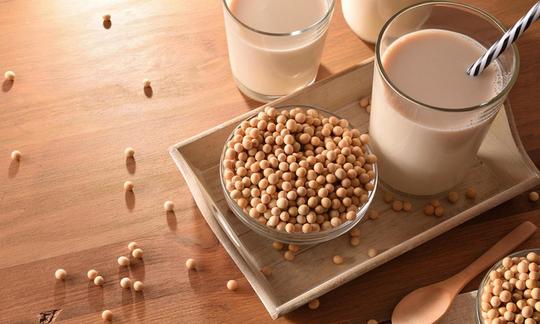

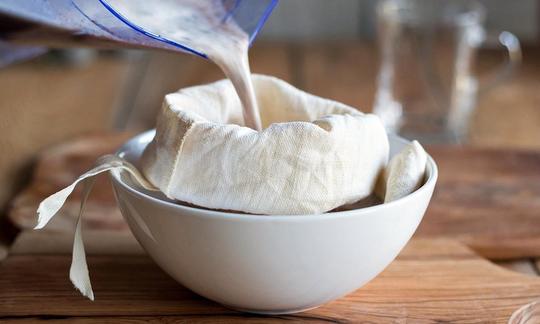

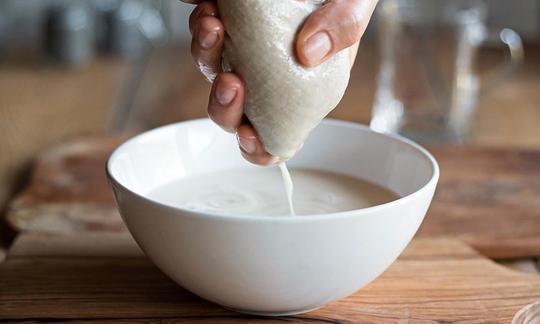


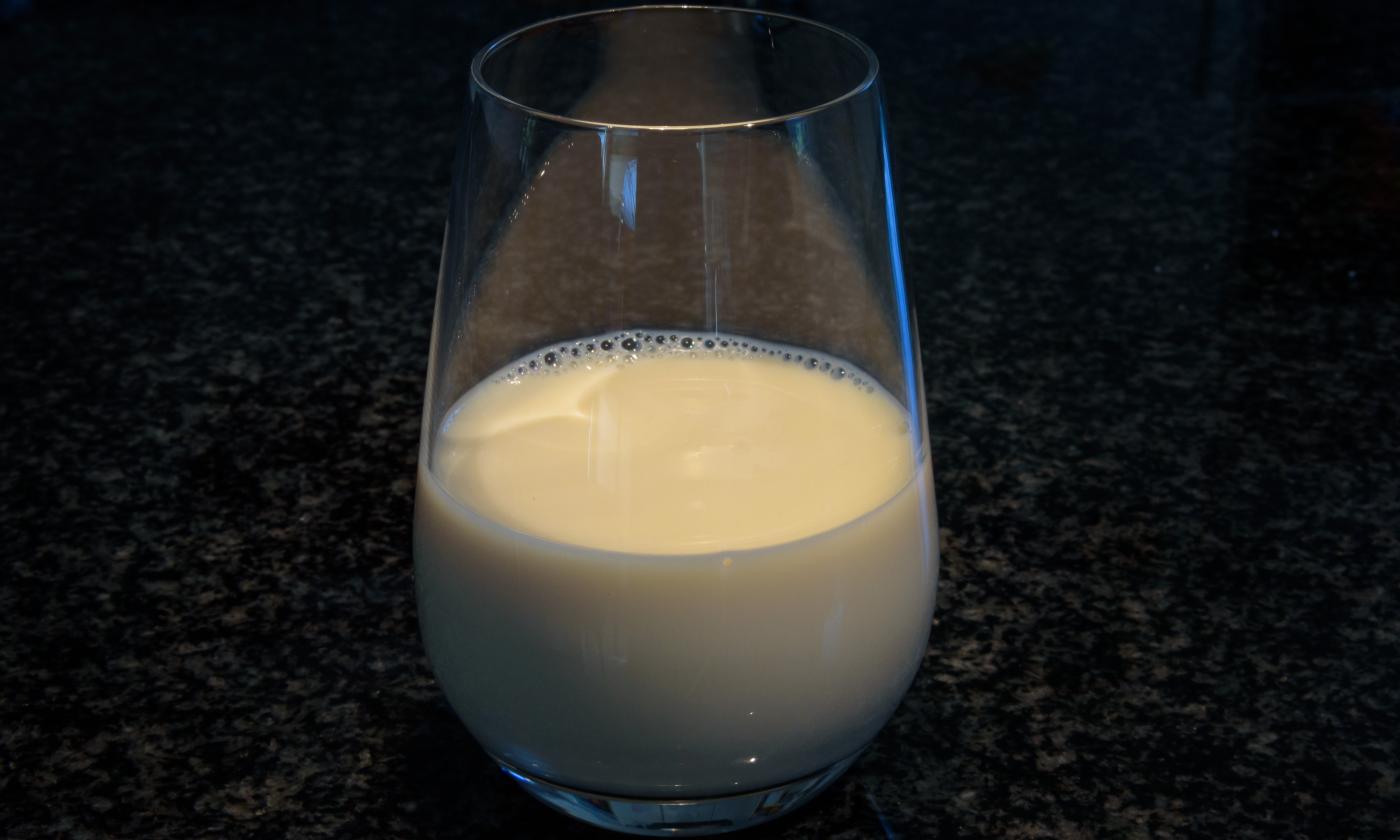
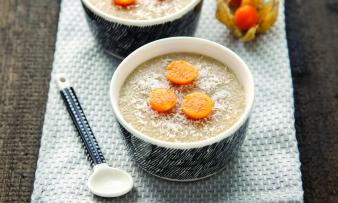
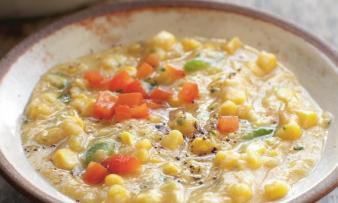


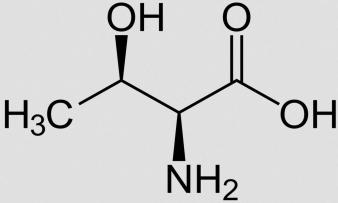


Comments